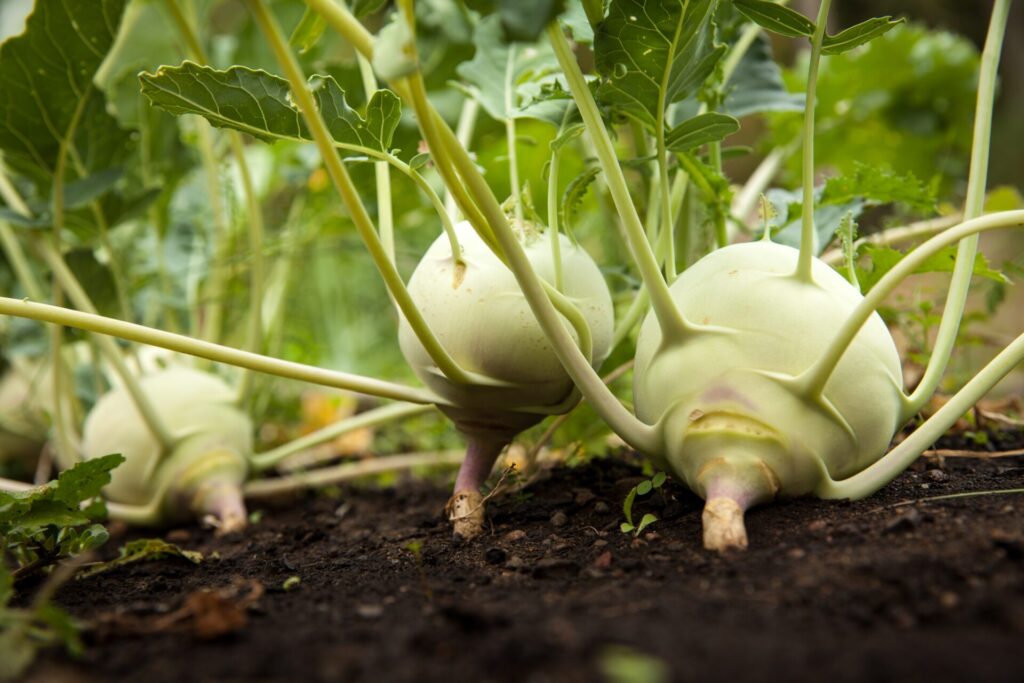Kohlrabi is a brassica, in the cabbage family. Popular in Germanyand India, the kohlrabi is a crisp and
versatile vegetable. This hardy biennial is often grown as an annual. It is easy to grow in mild climates,
making it a unique and delicious addition to any garden. Increasingly popular, kohlrabi is also available
in differentvarieties, all easy to grow, with slight variations in look and time tomaturity. The biggest
difference is whether or not you pick a green or purple variety.
Varieties:
Green kohlrabi varieties include the Korridor and the Winner,which mature quickly, in about 50 days,
compared to about 60 for some other varieties. Bright lime-green in color, they make an attractive
addition to a garden bed.
Purple kohlrabi varieties like the Azur Star and Kolibri are particularly bug-resistant, because of the
purple leaves on the plant, which keep the insects away.Taste-wise, you won’t notice much difference.
Storage varieties like Kossak, Superschmelz, and Gigante are, as you might guess, much larger than
the regular varieties of kohlrabi. They’ll last longer in the cellar or the fridge, prepared correctly. Tastewise, these varieties are all very similar.






